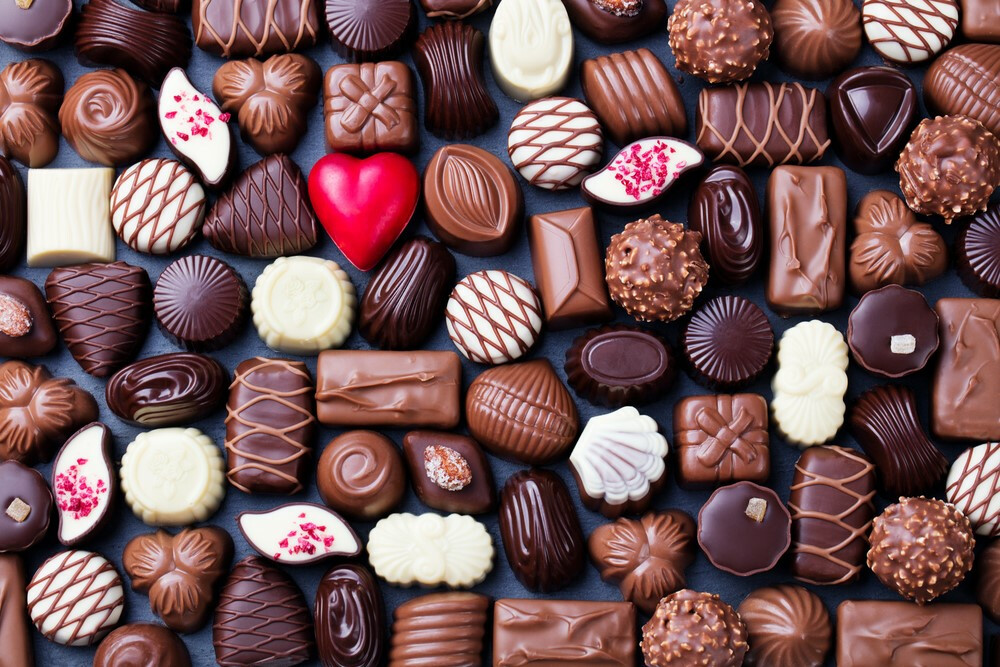
Product Spotlight: Custom Chocolate
Almost everyone loves chocolate. Did you know custom chocolate can be a fantastic marketing tool?
Rick Cundiff
Although there’s probably no such thing as a universally loved food, chocolate probably comes close. Rich dark, smooth milk or mild white, chocolate is beloved by millions around the world.
We know, you’re thinking “chocolate as a promotional product”? Yes! You can order custom chocolates molded with your brand, logo or personal message.
Besides, love is in the air and heart-shaped boxes of little chocolate squares will be half-price by the time you read this. What better time to celebrate the history of one of the world’s favorite flavors?
What is Chocolate?
Chocolate is made from the seeds of the cacao tree, a plant native to South America. Those seeds are what we know as cacao, or cocoa, beans. The trees were later introduced into Central America, where they continue to thrive.
What we refer to as chocolate is a combination of two parts of the cocoa bean. Cocoa butter is the fat from the ground seed. Cocoa solids are a mixture of nonfat substances.
Different forms of chocolate have different percentages of cocoa solids and cocoa butter. Dark chocolate contains little to no cocoa butter. Milk chocolate, as the name implies, contains milk, in addition to both cocoa butter and cocoa solids. White chocolate does contain milk, but doesn’t contain cocoa solids. All three can be sweetened to varying degrees with sugar as well.
Chocolate is an Old Favorite
Chocolate is nothing new. People have been enjoying it in various forms for thousands of years. The ancient Mesoamerican people of Mexico and Central America, including the Mayans and Aztecs, were among the first to consume chocolate beverages.
That drink was far different than the hot chocolate or cocoa we enjoy today. The Mayan drink mixed cacao past with chili peppers, vanilla and other ingredients, and no sugar, honey or other sweetener.
There’s evidence that cacao beans were valuable as currency. According to Smithsonian Magazine, an Aztec record from the 16th century showed that one could trade a single bean for a tamale, and even buy a turkey for 100 beans!
Chocolate Comes to Europe
Europe discovered chocolate when Spain conquered Mexico in the 16th century. Aztec king Montezuma reportedly welcomed explorer Hernando Cortez with a banquet that included drinking chocolate, according to Smithsonian.
Clearly, that didn’t end well for Montezuma, but it did result in chocolate expanding to the rest of the world. The Spanish conquistadors brought the delicacy home to the continent, and soon tamed the bitter drink with cinnamon, other spices and sugar.
From Spain, chocolate branched out to other countries, including England and France. Because both cacao and sugar were expensive, imported items, the drink was reserved for those who could afford it. But the Industrial Revolution changed that.
Chocolate for Everyone! Mass Production Begins
By the late 1700s, inventors in France and England produced machines that could produce chocolate quickly and economically. The first chocolate bar came along in 1847, the result of a new molding ability. In mid-century, the English company Cadbury began selling chocolate candies in boxes.
Milk chocolate showed up in 1875. A Swiss chocolatier added condensed milk – supplied by future chocolate empire Nestlé -- to his chocolate bar recipe to create a new taste and smooth texture.
Meanwhile in Pennsylvania …
Entrepreneur Milton S. Hershey saw a future in chocolate. He sold his Lancaster Caramel Company in 1894, and established the chocolate company that bears his name. In 1900, the company sold its first chocolate bar.
That first bar made history. The Hershey Company built a town adjacent to the factory. Milton Hershey built a boarding school for orphaned boys, and donated $90 million plus 40% of the company’s common stock.
Today, the school is open to both boys and girls from low-income families, and covers all costs for the students who qualify.
The Hershey legacy also includes Hersheypark, an amusement park originally built for company employees and their families. It’s now the largest theme park in Pennsylvania.
Chocolate Today
As decades have passed, chocolate in all forms has become ever more popular around the world. Hershey and Nestlé are giant global brands, of course. Many companies raise the bar with premium chocolates that proclaim their more refined style and taste. Of course, that’s a matter of opinion.
High end brands such as Godiva, Lindt and others, as well as small-batch confections from boutique producers, are a significant part of the market today. Smaller regional brands thrive throughout the country as well. Some brands explicitly promote their fair trade and other socially relevant status as an alternative to the commercial-style production of the industry giants.
Marketing with Chocolate
One great advantage of chocolate is that it can be molded into custom shapes and then decorated. You can mold it to the shape of your company logo, for example. A box of chocolates in that shape, presented in a box with a custom printed message make a terrific introductory promo, or a thank-you gift. It’s a memorable way to present your brand to both current and potential customers.
Whether for marketing or just personal consumption, chocolate is a sweet deal all the way around. Why not give it a try?
Rick Cundiff
Content Director, Blogger
Rick Cundiff spent 15 years as a newspaper journalist before joining TJM Promos. He has been researching and writing about promotional products for more than 10 years. He believes in the Oxford comma, eradicating the word "utilize," and Santa Claus.
